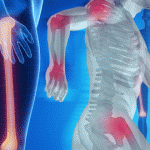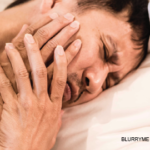He said “absolutely no evidence” exists that platelet-rich plasma has a structural effect in OA, but there is at least some encouraging data on pain relief. The systematic reviews on platelet-rich plasma and pain relief “tend to be positive. The more honest ones conclude that although it appears to be better, the level of evidence is limited due to the high risk of bias across the trials. And I think that’s the fairest conclusion.”
He cautioned that “whenever you’re looking at meta-analyses, you need to be wary of topics for which the data are sparse.” That said, many people feel relief after PRA, “probably due to the placebo effect, because we know it probably doesn’t matter which protocol is used.”
Interest in stem cell therapy has grown in the hopes it can spark structural recovery, but the evidence has not been encouraging, Dr. Block said.2 “Individual patients appear to feel benefit, often with prolonged duration,” which is possibly due to a placebo effect, he said. “There is no good evidence of a specific pain advantage. There is no good evidence of a structural advantage.”
The same holds true for prolotherapy, in which small volumes of crystalloid are injected with the intention of stimulating a healing process. It has been around since the 1950s and appears to be relatively safe, Dr. Block said.3 “But the data are not available to evaluate systematically,” he said. “There is no evidence of a structural benefit.”
All the above leaves a gaping void in OA pain treatment, Dr. Block said. “OA pain represents an enormous unmet need,” he said. “People really want to believe in breakthroughs and options, especially if they are natural. Be wary of dramatic results.”
Thomas R. Collins is a freelance writer living in South Florida.
References
- Zou K, Wong J, Abdullah N, et al. Examination of overall treatment effect and the proportion attributable to contextual effect in osteoarthritis: Meta-analysis of randomised controlled trials. Ann Rheum Dis. 2016 Nov;75(11):1964–1970.
- Piuzzi NS, Ng M, Chughtai M, et al. The stem-cell market for the treatment of knee osteoarthritis: A patient perspective. J Knee Surg. 2017 Jul 24.
- Krstičević M, Jerić M, Došenović S, et al. Proliferative injection therapy for osteoarthritis: A systematic review. Int Orthop. 2017 Apr;41(4):671–679.


